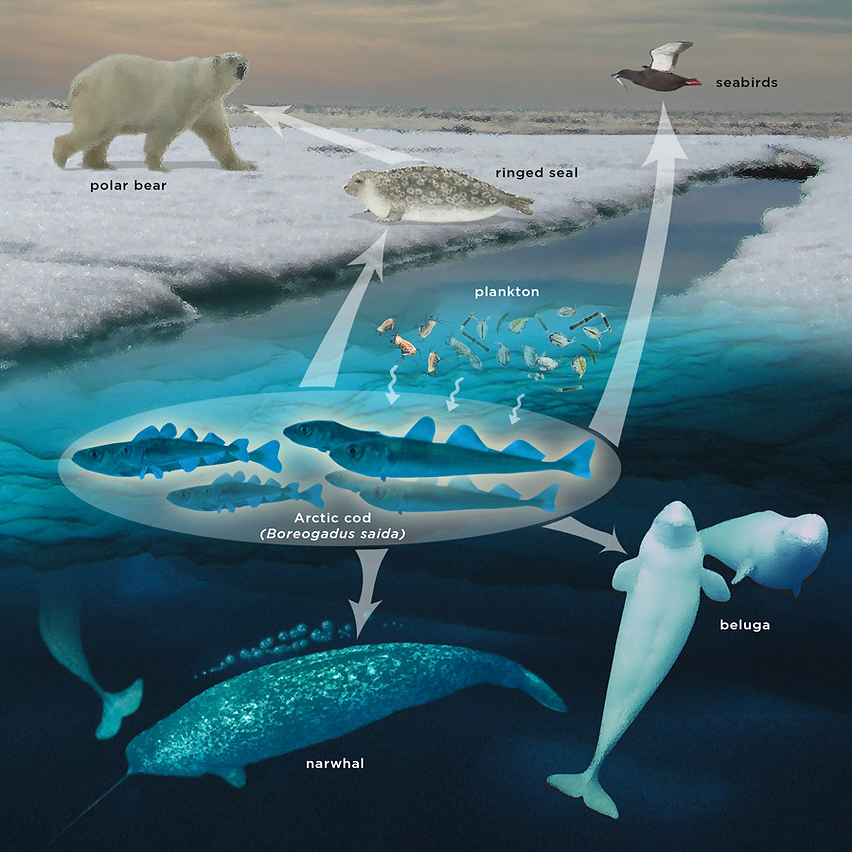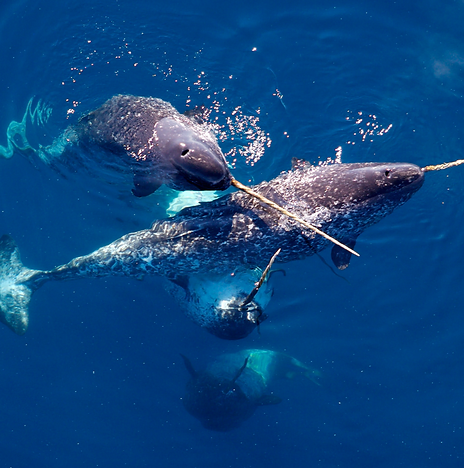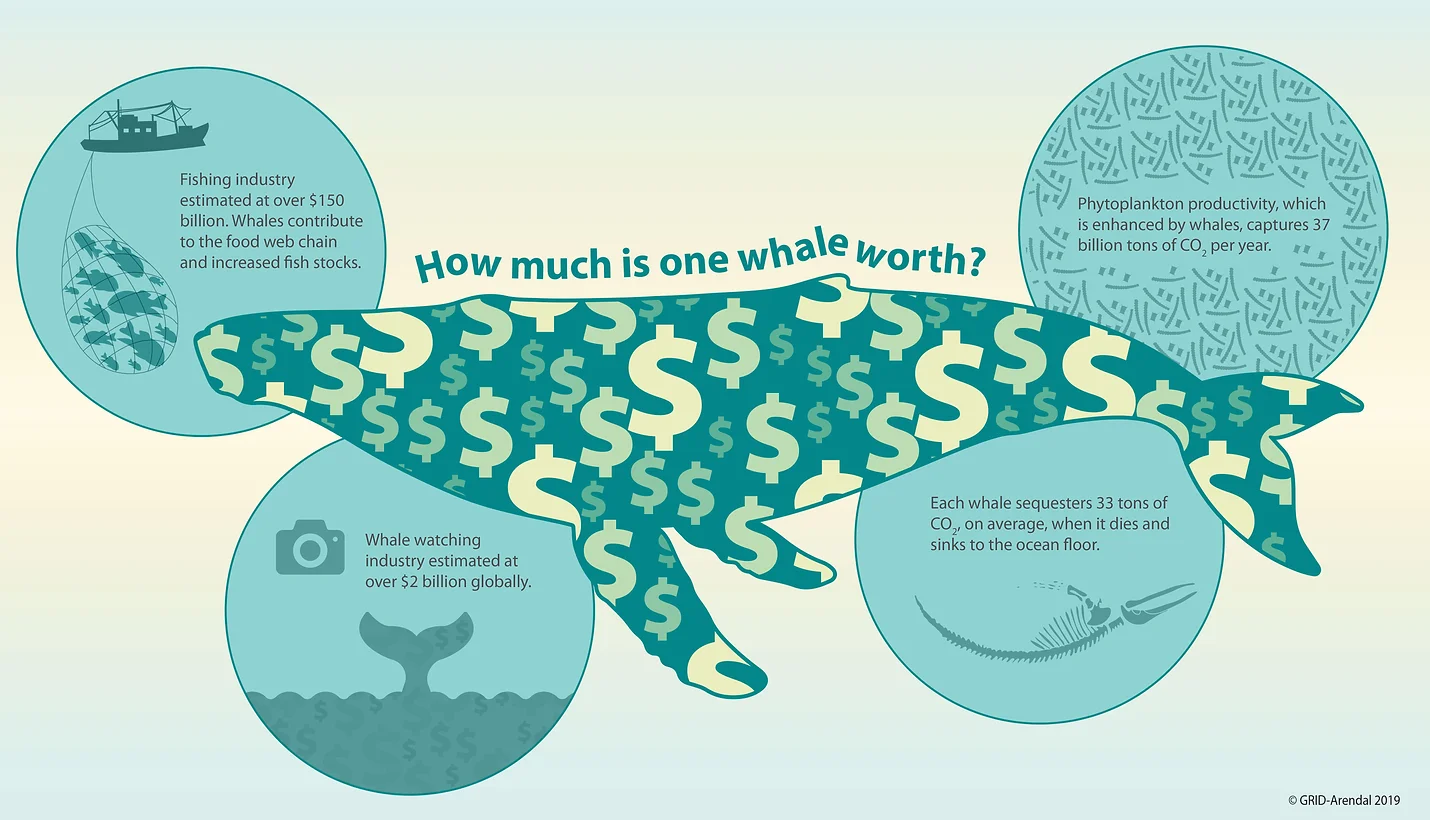Biodiversity: Teeming With Life
Melting ice threatens over 21,000 Arctic species, from polar bears to plankton, narwhals, walrus, reindeer, ivory gull, and niche flora.

Phytoplankton are the basis of the aquatic food web.
They thrive and bloom when the ice melts in the spring and light becomes available. Shrinking sea ice extent allows more light to become available, which can create more food sources but also the risk of harmful algal blooms.
Arctic cod, an ice-dependent and keystone species.
Arctic Cod are a planetary food source and one of the few species that link the lower food chain to the higher trophic levels. They lay their eggs under the sea ice, and when the eggs hatch their young feed on phytoplankton. With sea ice melting earlier in the season, increased light availability drives plankton blooms to occur before the eggs hatch, depriving offspring of the food necessary for their development. Arctic Cod is expected to substantially decline over the next decades.
Rising water temperatures invite southern species to migrate to the Arctic, increasing competition in a shrinking habitat.
Polar Bears
Polar bears are shifting from being marine predators to having to forage on land for food as the sea ice is melting. They now can be found hunting reindeer and rummaging garbage rather than feasting on fatty seals.
As ice melts faster, grey whales are arriving too late to forage from springtime phytoplankton blooms, threatening their survival while greatly diminishing the distribution of essential nutrients to other marine species. Resulting in another divide in the Arctic food web. Whales sequester 190,000 tons of carbon from the atmosphere to the deep oceans each year—like removing 80,000 cars from the road!


At risk from shipping
The anticipated rise in numbers and size of vessels crossing the Arctic Is a real threat to whales, especially slow moving Bowheads dolphins and narwhals as they are often unable to avoid ships. In most collisions, a whale struck by a ship is killed or left severely injured. Increased shipping traffic also creates noise pollution, driving whales away from areas important to their survival.
Sonic blasting for deep sea bed mining is very disruptive to whales who are highly sensitive aural creatures.
Narwhals would be especially vulnerable in the future because they tend to stay in specific areas and, according to Dr. Kristin Laidre, a polar scientist at the University of Washington, “they live in only about a quarter of the Arctic, and they’re smack dab in the middle of shipping routes”.
The importance of maintaining the health of this ecosystem goes beyond the Arctic.


